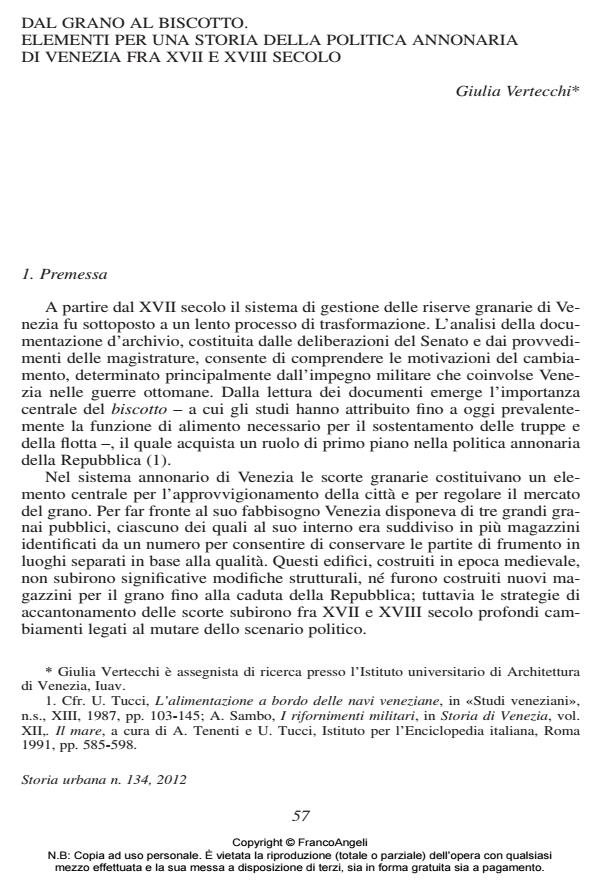Outlines of the Venice provisionings system in the XVIIth and XVIIIth century
Journal title STORIA URBANA
Author/s Giulia Vertecchi
Publishing Year 2012 Issue 2012/134
Language Italian Pages 18 P. 57-74 File size 492 KB
DOI 10.3280/SU2012-134004
DOI is like a bar code for intellectual property: to have more infomation
click here
Below, you can see the article first page
If you want to buy this article in PDF format, you can do it, following the instructions to buy download credits

FrancoAngeli is member of Publishers International Linking Association, Inc (PILA), a not-for-profit association which run the CrossRef service enabling links to and from online scholarly content.
Provisioning - Feeding - Grain storage and distribution - Venice, 16th-18th century
The aim of this article is to outline, through analysis of archival sources, the changes in the provisioning system of Venice during the XVIIth and XVIIIth centuries. These changes started with the outbreak of the war of Candia and developed during the following century. The paper focuses on three main topics: first of all the role of biscuit in order to buffer fluctuations of grain prices and to lower the costs of storing surplus. The biscuit was a long-lasting food easy to carry and to store for the needs of the navy and the military requirements; it was certainly used as food for the army and the fleet, but it is also true that requirements of 4,700 tonnes per year needed huge resources and considerable organization. A second nucleus of the paper examines the role of grain storage, not so much during the years of shortage, but above all during those of abundant harvest. In this way it is possible to analyze the strategies employed by the government at an especially critical moment, since market prices fall in years of abundant harvests, but stock costs rise. Thirdly a totally financial form of speculation thanks to which even the richest people managed to take advantage of a tax break in the payment of the principal direct tax, the tithe («la decima»). A careful reading of «non-quantitative» documents provides an understanding of the complexity of the relationship between fiscal policy and government economic choices, bringing to light the intricate composition of the society and its internal contrasts.
Giulia Vertecchi, Dal grano al biscotto. Elementi per una storia della politica annonaria di Venezia fra XVII e XVIII secolo in "STORIA URBANA " 134/2012, pp 57-74, DOI: 10.3280/SU2012-134004